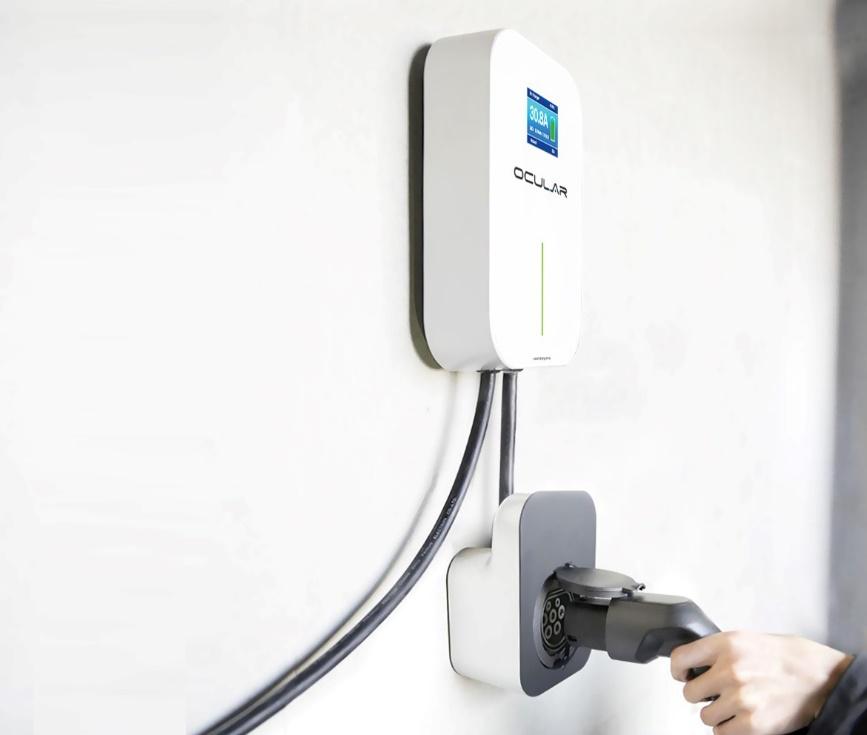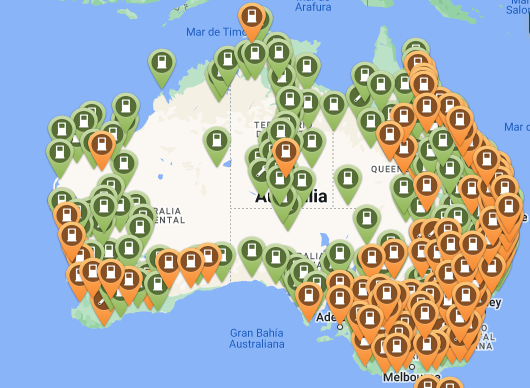EVs currently represent 3.39% of the new vehicle sales in Australia. One of the main reasons why Australians are not more heavily investing in the EV uptake is because of misinformation. This is why it is important to debunk these myths with facts.
Myth 1: EVs Do Not Have a Long Enough Range
One of the most popular myths about EVs is that they feature a short driving range. This has been debunked over and over, but it keeps coming back, causing fear from Internal Combustion Engine (ICE) drivers that might otherwise be interested in switching to EVs.
Fact 1: Driving Range for EVs in Australia Ranges From 400 – 600 Km
The fact is that the average EV in Australia features a range between 400 km and 600 km, going up to 620 km for the BMW iX xDrive50 Sport. This means that with an electric vehicle you will easily cover your daily needs. For a daily road trip of 800 km (which is about the maximum that any person should be driving in a single day) you could cover half the route before stopping at an EV charging station to recharge.
Myth 2: EV Drivers Take Too Much Daily Time Charging Their Vehicle
Another range-related myth is that EV drivers need to constantly invest too much time to charge their vehicles. To debunk this myth you only need to look at the daily commute for Australians and compare it to the range for most EVs.
Fact 2: The Average EV Driver Needs to Recharge Their EV Around Once Every 10 Days

The average Aussie drives slightly more than 30 km per day or up to 36.4 km. Since EVs in Australia feature a driving range of 400 – 600 km, a single EV battery charge can last around 10 days. This means you will need to recharge your vehicle three to four times a month.
Charging at a public EV charging station does mean spending a few hours a month on charging. On the other hand, home EV charging using 22 kW high-capacity EV chargers like the three-phase Zappi or Ocular LTE EV chargers, do not affect your daily routine.
Myth 3: Charging an EV Is More Expensive than Filling up The Gas Tank
EVs are often seen as highly expensive vehicles compared to ICE vehicles. While it is not a myth that the upfront cost to buy an EV can be higher than for ICE vehicles, this differs for the driving cost.
Fact 3: EV Charging in Australia is 40% – 65% Cheaper than Filling up the Petrol Tank
Any ICE vehicle with a fuel consumption of 6 L/100 km is considered efficient in Australia, meaning that driving 100 km for an ICE vehicle costs around $10.14 – $10.86 AUD considering the cost for petrol at $1.69 – $1.81 AUD/L depending on the state.
On the other hand, good efficiency for EVs is close to 17 kWh/100 km, but some models consume even less. Considering the variable electricity cost per state of $0.2114 – $0.3613 AUD/kWh, it can cost $3.59 – $6.14 AUD to drive an EV for 100 km. This means that driving EVs can be anywhere between 40% and up to 65% cheaper than driving ICE vehicles.
Myth 4: There Are Not Enough Charging Locations to Recharge an EV Battery
The 4th myth on our list rises as a concern of Aussies believing that there are not enough public EV charging stations in Australia. While this is not entirely false, there are enough EV charging stations in most urban locations to supply the existing EV population.
Fact 4: While There Are Around 2000 Public Charging Locations, the Australian EV Charging Infrastructure Is Still a Work in Progress

The fact is that there are 2,147 public EV charging locations, with 3,669 EV charging stalls distributed around them, but the EV charging infrastructure requires some restructuring per state. The number of EV charging stations is generally distributed across Australian States according to the number of EVs per capita to install EV charging stalls, but not the area of the state.
For instance, New South Wales (NSW) that has an area of 801,150 km2 has around 647 chargers, while others like the Northern Territory (NT) with 1,347,791 km2 only have 23 EV charging locations. This means that people living in metropolitan areas and big cities like Sidney, Melbourne, Brisbane, Perth, or Adelaide, will have a much higher access to EV charging stations, while people living in cities located in other states like Northern Territory or Australian Capital Territory (ACT) may indeed find it more difficult to charge their EV in a public charging station.
It is important to know that public charging stations should not be used as the default charging method for an electric vehicle; instead, they should be used for emergencies and during long trips between cities. This is why, regardless of which state you live in, EV drivers should install a 7 kW single-phase home EV charger like the Ocular LTE or 22 kW three-phase chargers like the Wallbox Pulsar Plus.
Myth 5: EVs Are Not Really Emissions Free
The 5th myth in our list makes no sense since there is more than enough information going on, backing up the science behind EVs and their positive impact on the environment.
Fact 5: EV Emissions Depend on the Energy Used to Charge Them, but They Can Be Entirely Emissions Free
The fact is that EVs feature zero exhaust emissions. While you can still release some Greenhouse Gas (GHG) emissions if you charge the EV battery with energy coming from fossil fuels, this is still far better for the environment than using ICE vehicles. Charging EVs with solar power or with other clean energies can solve this by reducing emissions, taking them to technically zero.
Myth 6: EVs Require the Same Maintenance Budget as ICE Vehicles
Since EVs are highly complex electro-mechanical pieces of machinery featuring many electronics, some think that the maintenance can be higher or more expensive than for ICE vehicles.
Fact 6: Repair & Maintenance Cost for EVs Is Much Cheaper Than for ICE Vehicles
According to the Electric Vehicle Council, the maintenance cost for vehicles in Australia per km driven is estimated at ¢2.00 for EVs and ¢7.00 for ICE vehicles. This means that maintenance considering a yearly driven distance of $13,300 km, costs $266 AUD for EVs and $931 AUD for ICE vehicles. In other words, EV drivers save around $665 per year with 70% cheaper maintenance for EVs.
Myth 7: Driving EVs Is Slower Than Driving ICE Vehicles
There is a myth that EVs are much slower than ICE vehicles.
Fact 7: EVs Accelerate Faster Than ICE Vehicles, and Reach Similar Top Speeds
The top speed for EVs is limited by manufacturers to extend battery lifespan, increase range, and for safety purposes. While the top speed for an EV may be slightly lower than for an ICE, the average top speed for EVs is estimated at 179 km/h nowadays (although many EV models can go up to 200 – 282 km/h).
Now, if you think about it, when was the last time that you went 200 km/h on the highway? The average top speed for an EV will be more than what you need since the top allowed speed on Australian highways is limited at 130 km/h.
Now, the real driving upgrade in EVs is their acceleration. While ICE vehicles take up to 7 seconds to go from 0 to 95 km/h, EVs take only 5 seconds to reach that speed. This quicker acceleration makes EVs much faster in urban environments, delivering a more satisfying driving experience than ICE vehicles.
Myth 8: EVs Are Just a Trend
Another typical myth is that EVs are only a trend. The truth is that EVs are here to stay.
Fact 8: EV Sales Are Skyrocketing More Than Ever
EV sales are rapidly increasing in Australia (and worldwide). The Australian EV market shares grew 65% in 2022 alone and this will probably increase in the future since over 100 businesses and organizations are joining forces to get 1,000,000 EVs on the roads by 2027.
The Australian government plans that 90% of new vehicles sold in 2050 will be EVs. In fact, the ACT government already banned ICE vehicle sales starting in 2035. In other words, EVs will soon be the standard mobility option in the future.
Myth 9: Driving EVs Is More Dangerous Because of the Lithium-Ion Battery
There is another myth stating that EVs are more dangerous than ICE vehicles.
Fact 9: EVs Are Safer or as Safe as ICE Vehicles
The fact is that EVs are safer and less likely to catch fire than ICE vehicles and Plug-in Hybrids. EVs have safety systems like the Battery Management System (BMS) and the Thermal Management System (TMS) which protect and control the temperature of the battery. In Australia, Fire and Rescue organisations do not see EVs as a higher threat than ICE vehicles.
Myth 10: EVs Only Demand Power and Have a Negative Impact on the Grid
Since EVs require a large amount of power, it is an understandable myth that Australian citizens believe that these vehicles will only demand power and negatively impact the power grid.
Fact 10: EVs Can Act As Portable Batteries That Send Power Back to The Grid and Even Power a House
While EVs do demand a lot of power, they also have the potential to support the grid by sending back power to it. In other words, they can work as an active element in a Virtual Power Plant (VPP) that can even be used to power the home. All of this is possible thanks to the bidirectional technology.
While this is a new technology that not all vehicles have, as the technology improves and more EVs are integrated into the roads, this will likely become the norm in the future for the support of smart grids across the globe.